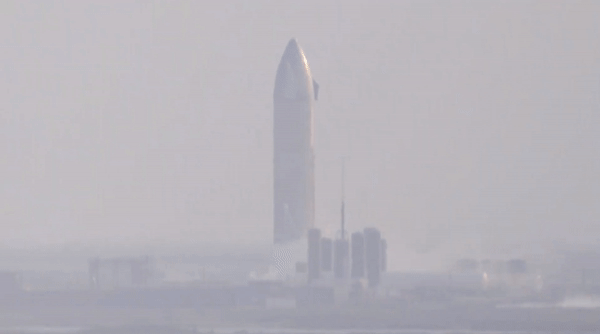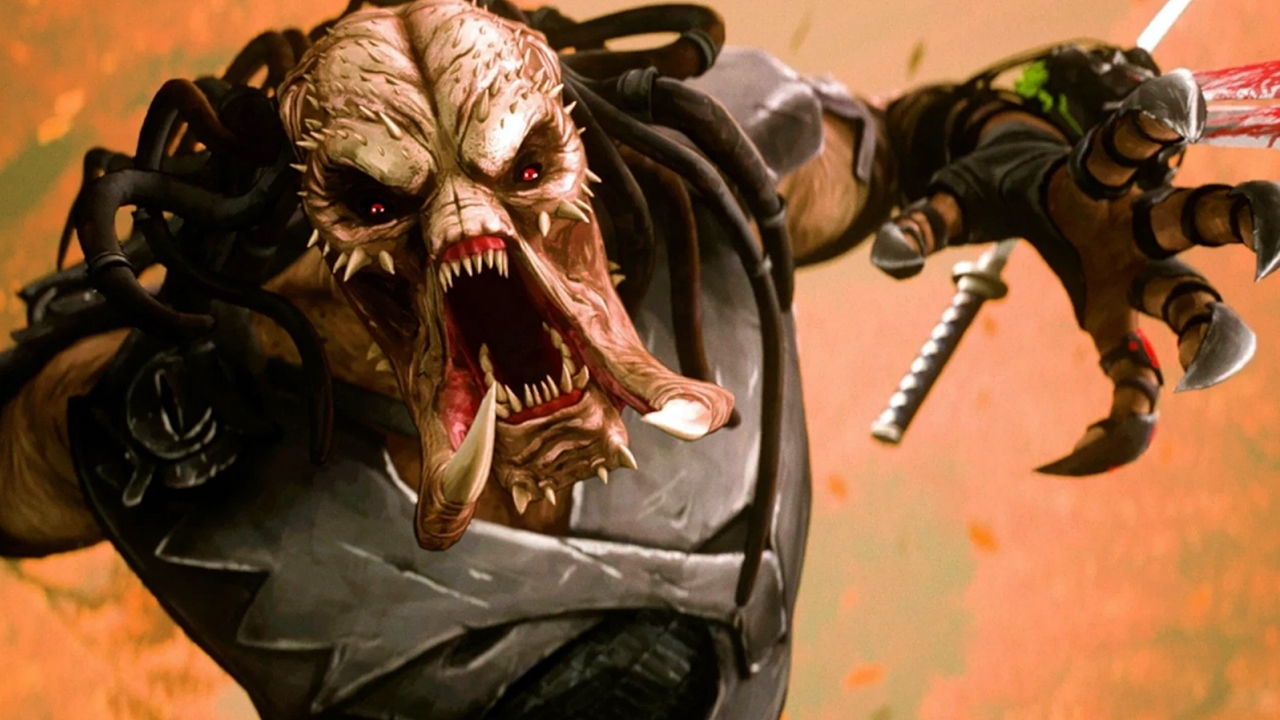SpaceX has fired up its newest Starship prototype for the first time.
The SN9 vehicle's three engines lit up for about one second today (Jan. 6) at 5:07 p.m. EST (2200 GMT) during a static-fire test at SpaceX's South Texas facilities, near the Gulf Coast village of Boca Chica.
Static fires, in which rocket engines blaze while a vehicle remains anchored to the ground, are a routine preflight checkout. And SN9 ("Serial No. 9") will indeed get off the ground soon, if all goes according to plan: SpaceX is prepping the vehicle for a test flight that's expected to be similar to the epic one made last month by its predecessor.
Video: Watch SpaceX test-fire its Starship SN9's engines
Starship and Super Heavy: SpaceX's Mars-colonizing vehicles in images

On Dec. 9, SN8 — which was powered by three of SpaceX's next-generation Raptor engines, as SN9 is — performed the Starship program's first-ever high-altitude hop, soaring about 7.8 miles (12.5 kilometers) into the South Texas skies. (Three previous single-engine prototypes have flown as well, but they all reached a maximum altitude of about 500 feet, or 150 meters.)
SN8 didn't stick its landing and exploded in a dramatic fireball. But the vehicle hit pretty much every other milestone that SpaceX had laid out, leading company founder and CEO Elon Musk to declare the flight a big success.
SpaceX is developing Starship to take people and payloads to the moon, Mars and other distant destinations — and, eventually, to take over all of the company's spaceflight needs. The system consists of two elements: a 165-foot-tall (50 m) spacecraft called Starship and a giant first-stage booster known as Super Heavy.
Both Starship and Super Heavy will be fully and rapidly reusable, Musk has said. Super Heavy will come back down to Earth for vertical landings after getting Starship aloft, as the first stages of SpaceX's Falcon 9 and Falcon Heavy rockets already do. But Starship's touchdowns will be even more precise than those of the Falcons, ideally occurring directly on the launch stand to improve turnaround time, Musk announced recently.
Get the Space.com Newsletter
Breaking space news, the latest updates on rocket launches, skywatching events and more!
The Starship spacecraft, meanwhile, will make many roundtrips between Earth and Mars, or whatever other destination has been targeted. The vehicle just needs the roughly 30-engine Super Heavy to get off our relatively bulky planet; the final, six-engine Starship will be powerful enough to launch itself off the surfaces of the moon and Mars, Musk has said.
Today's static fire was captured on video by dedicated Starship watchers like the tourism site Spadre.com, which webcasts live Starship views on YouTube. It may not be the only such test performed by SN9 before it takes flight. For example, SN8 conducted four static fires over the course of more than a month ahead of its high-altitude hop.
Mike Wall is the author of "Out There" (Grand Central Publishing, 2018; illustrated by Karl Tate), a book about the search for alien life. Follow him on Twitter @michaeldwall. Follow us on Twitter @Spacedotcom or Facebook.
Join our Space Forums to keep talking space on the latest missions, night sky and more! And if you have a news tip, correction or comment, let us know at: community@space.com.

Michael Wall is a Senior Space Writer with Space.com and joined the team in 2010. He primarily covers exoplanets, spaceflight and military space, but has been known to dabble in the space art beat. His book about the search for alien life, "Out There," was published on Nov. 13, 2018. Before becoming a science writer, Michael worked as a herpetologist and wildlife biologist. He has a Ph.D. in evolutionary biology from the University of Sydney, Australia, a bachelor's degree from the University of Arizona, and a graduate certificate in science writing from the University of California, Santa Cruz. To find out what his latest project is, you can follow Michael on Twitter.
